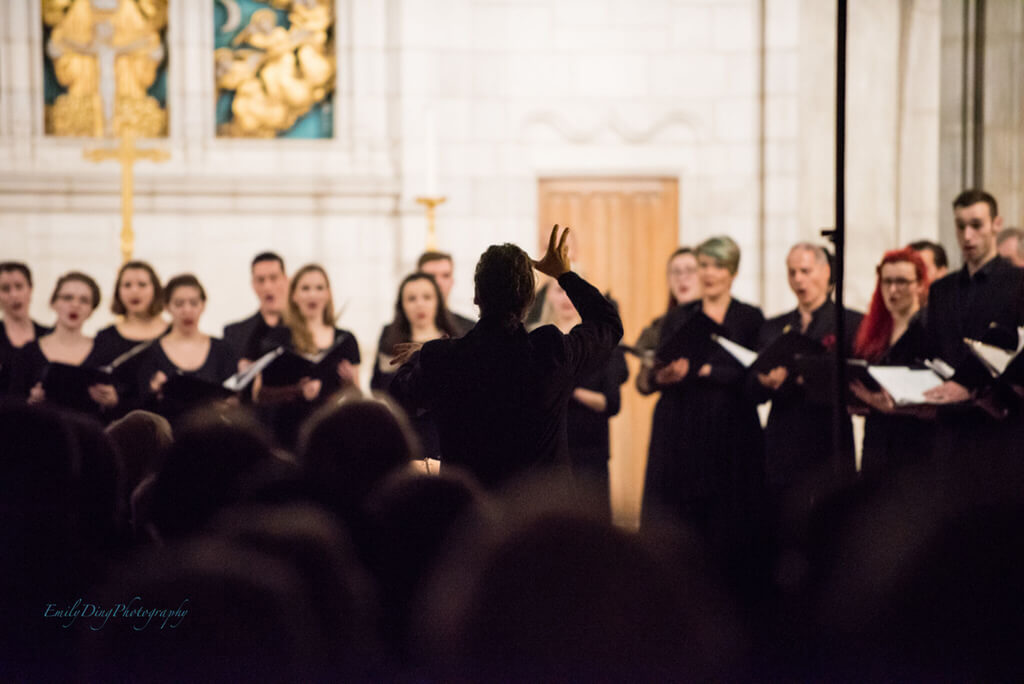
The University of Toronto’s Mozart Requiem Showcases its Students and the Governor General of Canada
On March 4, the University of Toronto showcased a collaborative choral event that stretched across Ontario at St. Basil’s Church in Toronto. Those involved included the University of Toronto’s Schola Cantorum, Choir of the Theatre of Early Music, and Baroque Orchestra combined with the Ottawa Bach Choir and the York University Chamber Choir to perform some of Mozart’s most famous works including Exsultate, jubilate, K. 165, Ave Verum Corpus, K. 618, and his Requiem, K. 626. There was also a guest appearance by Governor General of Canada, Her Excellency The Right Honourable Julie Payette, who sang as a soprano in the Ottawa Bach Choir.
The evening began with Exsultate sung by mezzo-soprano Veronika Anissimova. Although her coloratura was impressively quick and precise, Anissimova sounded strained in her upper range and it was hard to understand her quiet diction. The Schola Cantorum orchestra led by violinist Adrian Butterfield attentively accompanied Anissimova and brought a lightness and bounce to the music.
Created in 2012, the Schola Cantorum strives to recreate how they imagine early works might have initially been performed. Creator, conductor, and countertenor, Daniel Taylor assembled an orchestra including the exact number of wind and percussion instruments that Mozart designated for the Requiem. Seen often in the 17th-century, Mozart did not indicate the number of string instruments or singers in the choir, these were left at the ensemble’s discretion. Overall, I found the balance in the orchestra very good. However, the choir composed of over seventy voices seemed too large to effectively convey the lightness and contrast that Mozart would have expected in his Requiem.
To create more than four performance opportunities, the quartet was split up among fourteen students including: sopranos Julia Frodyma, Anais Kelsey-Verdecchia, Rachel Allen, Madison Angus, Mary Christidis, and Erika Wood; mezzo-sopranos Alexandra Hetherington, Jennifer Routhier; countertenors Benjamin Shaw, and Ryan McDonald; and bass-baritones Matthew Li, Jacob Feldman, Matthew Tissi, and Daniel Thielmann. For me, the two stand out performers included Li’s resonant bass voice singing the opening of “Tuba Mirum,” and Ryan McDonald’s surprisingly rich and dark countertenor voice in the “Benedictus” quartet.
The tenor solos were all sung by professional tenor Benjamin Butterfield. I cannot deny that this artistic decision left me a bit mystified. If this was a student production, am I to assume that there were not enough student tenors to sing these excerpts?
Ave Verum Corpus and the Requiem were conducted by Taylor. As previously mentioned, I found his interpretation somewhat heavy possibly a consequence of the choir’s size. Having said this, the choir performed the work accurately despite their somewhat limited range of dynamics, and the orchestra managed to still breathe life into music.



